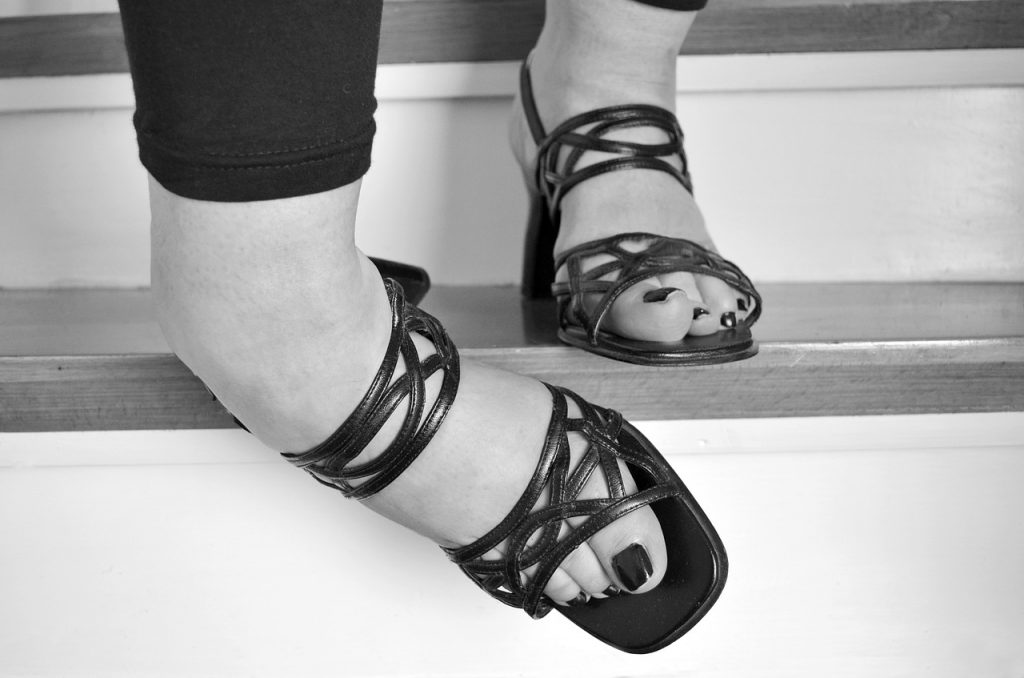Most people have twisted an ankle at some point in their life. But if your ankle gets swollen and painful after you twist it, you may have sprained it. As the warm weather motivates you to spend more time outdoors, your chances of developing foot or ankle pain may increase. Here’s what you need to know about ankle sprains and how to treat them.

What exactly is an ankle sprain?
When you sprain an ankle, this means you have stretched and possibly torn the ligaments in your ankle. Even though sprains are a common occurrence, any foot doctor will tell you that sprains are not always minor injuries. Some people with repeated or severe sprains can develop long-term joint pain and weakness, so proper treatment is essential.
What causes sprains?
Most ankle sprains happen when you make a rapid shifting movement with your foot planted, such as when you play soccer or get tackled in football. Often the ankle rolls outward and the foot turns inward. This causes the ligaments on the outside of the ankle to stretch and tear. Less frequently, the ankle rolls inward and the foot turns outward. This damages the ligaments on the inside of the ankle.
Sprains of this kind can range from mild to severe, depending on how badly the ligament is damaged and how many ligaments are injured. With a mild sprain, the ankle may be tender, swollen, and stiff. But it usually feels stable, and you can walk with little pain. A more serious sprain might include bruising and tenderness around the ankle, and walking is painful.
In a severe ankle sprain, the ankle is unstable and may feel “wobbly”. You can’t walk, because the ankle gives out and may be very painful.
What are the symptoms?
With most sprains, you feel pain right away at the site of the tear. Often the ankle starts to swell right away and may also bruise. The area is usually tender to touch, and it hurts to move it.
In more severe sprains, you may hear or feel something tear, along with a pop or snap. You will probably have extreme pain at first and will not be able to walk or even put weight on your foot. Usually, the more pain and swelling you have, the more severe your ankle sprain is and the longer it will take to heal.
Treating a minor sprain at home
Here are simple steps you can take to treat the swelling and pain that usually come with a sprained ankle.
- Ice the area using an ice pack. Homemade versions include ice cubes with cold water inside a zip-lock bag or a bag of frozen vegetables.
- Use a compression bandage to protect and support the ankle area.
- Elevate your ankle above your heart. Get comfortable on the couch or your bed, using a stack of pillows to lift your ankle. This will help your circulatory system go to work in relieving the swelling.
- Over-the-counter pain relievers such as ibuprofen or naproxen sodium can help to ease discomfort. Follow directions carefully.
When to visit your foot doctor?
Sometimes an ankle sprain doesn’t respond to the simple treatments outlined here. When pain and swelling persist longer than a day or so, call Dr. Jeffrey Wachtel. As an experienced foot doctor and foot surgeon, he has treated many of patients in the Lansdale, Pennsylvania area. Dr. Wachtel will provide the expert care needed to get you back on your feet quickly while preventing future foot and ankle pain with other issues.
Source






